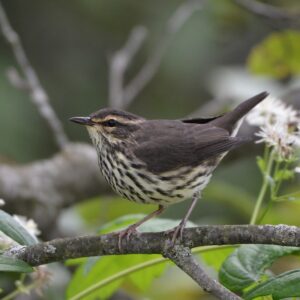Forests of Hope – Sustaining Livelihoods and Canadian Birds
In February, I travelled to Central America to join a team of coffee specialists from Tim Hortons to learn about their efforts to improve the livelihoods of communities growing shade coffee in Guatemala’s mountainous El Trifinio region (also a protected national park and globally Important Bird Area).
I was keen to see how this iconic Canadian company was contributing to the conservation of the area’s forests – vital for Canadian wintering birds – after learning from Canadian Wildlife Service scientists that as many as 50% of Canadian migratory birds, many of which migrate to Central America, were suffering significant declines in their populations. The reasons for this decline are reported to be varied, but one major factor is the loss of suitable habitat in both their wintering and breeding grounds.
Noting this decline in Canadian birds, and that studies show that many of these same birds have a preference for shade grown coffee plantations, I embarked on a three-day sojourn to the region that took us from Esqipulus in Guatemala, through to Ocotepeque in Honduras and then across the cordillera to San Salvador in El Salvador.
My hopes were to see migratory birds in the coffee growing regions and discuss ways in which Nature Canada could partner with Tim Hortons and local groups to support ongoing efforts to conserve the region’s forests and their wildlife (namely birds).
Whilst in Guatemala, we joined a multi-disciplinary team of technicians from the El Trifinio project that is promoting the sustainable development and conservation of the forested highlands that is the source for at least two major rivers – the Rios Lempa and Higuito. The forests of this region are the primary source of water for both rivers, and therefore the main impetus that brought together these three countries for conservation on this tri-national border area.
Using 4X4s, we travelled to remote backcountry communities where we experienced the entire coffee growing process, including the establishment of nurseries; the planting of young trees; the collection, milling and roasting of Arabica coffee beans; and finally the testing (or “cupping” as it is called).
 Tim Hortons’ support is targeted to promote more sustainable coffee production processes. This includes coffee plantation production techniques that aim to improve the quality of the coffee bean, and environmental practices such as tree planting, fertilization management and water treatment. In parallel, their support is also reaching the youth and families of farmers through social programs including new housing and better access to education.
Tim Hortons’ support is targeted to promote more sustainable coffee production processes. This includes coffee plantation production techniques that aim to improve the quality of the coffee bean, and environmental practices such as tree planting, fertilization management and water treatment. In parallel, their support is also reaching the youth and families of farmers through social programs including new housing and better access to education.
It is estimated that as much as 90-95% of the coffee grown in this region is considered shade grown.
In one of these small coffee plantations, hundreds of Wilson’s Warblers, a species that commonly breeds across Canada’s boreal forest, were found foraging in the shade of flowering coffee trees. They were joined by Black-throated Green Warblers, a species more common in the deciduous woods of eastern and central Canada, and the dusky Hammond’s Flycatcher, a species normally found in the forests of western Canada. As is typical in the tropics, these birds move in mixed flocks with resident species like the exotic café colored Oropendulas.
The challenges of working in this region are many – the average wage is estimated at less than three dollars a day. Nutrition, education and health are priority issues of many of the farmers as they work to sustain their livelihood and their families.
Tim Hortons has clearly taken a balanced approach to coffee production by providing the much-needed technical support (through the Hanns R. Neumann Stiftung) to improve coffee production whilst also tending to the social and environmental needs of the local communities who are the basis for coffee production throughout the region.
Indirectly, the promotion of shade grown coffee is ensuring that forests in the area are valued and conserved, thus providing habitat for Canadian birds that Nature Canada is striving to conserve throughout their ranges. We look forward to building strategic relationships with communities and companies to promote the conservation of forests in Latin America through coffee production that is “forest and people friendly.”
Photos: The Tim Hortons coffee specialists; coffee beans; Wilson’s Warbler by prairiedog (back home) on flickr; a local community



